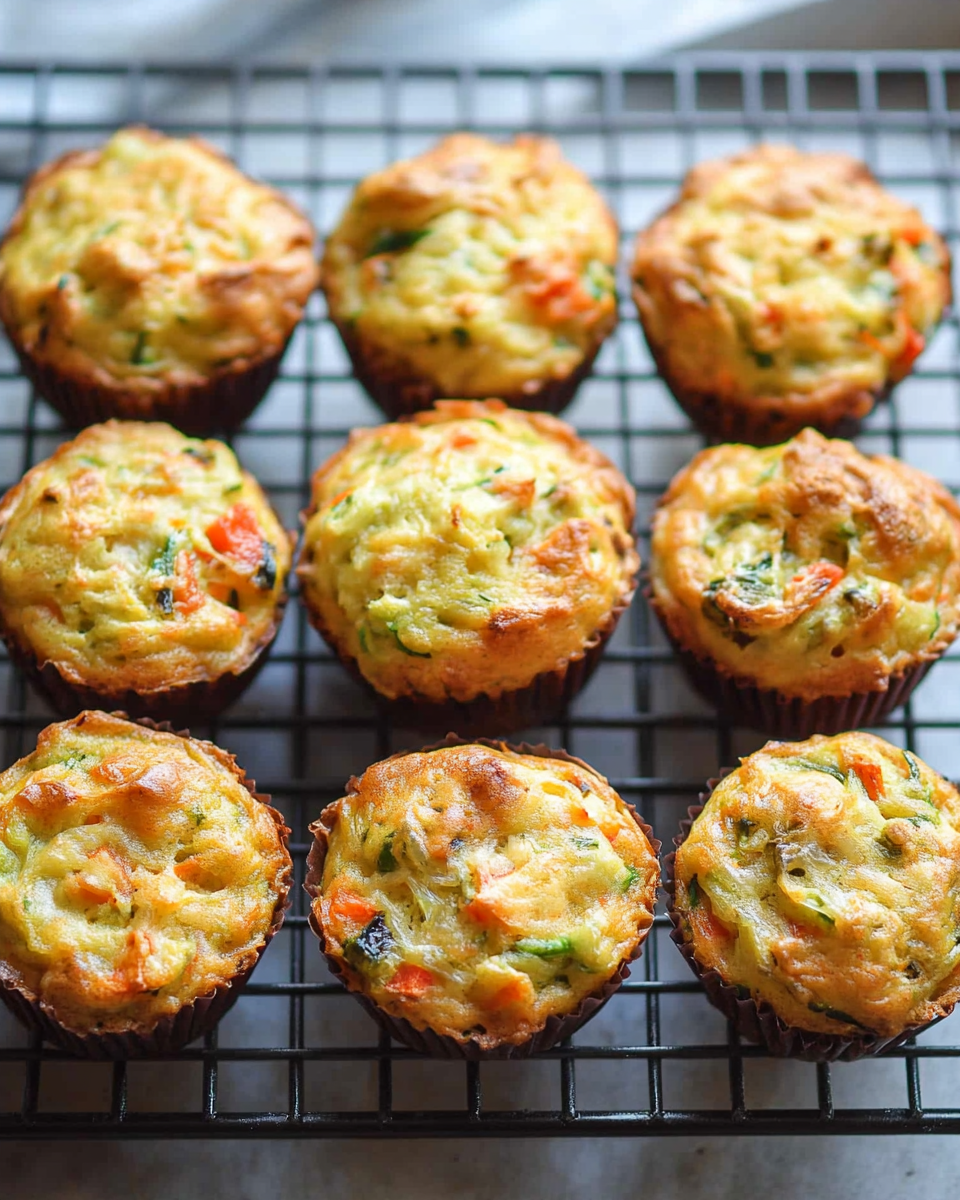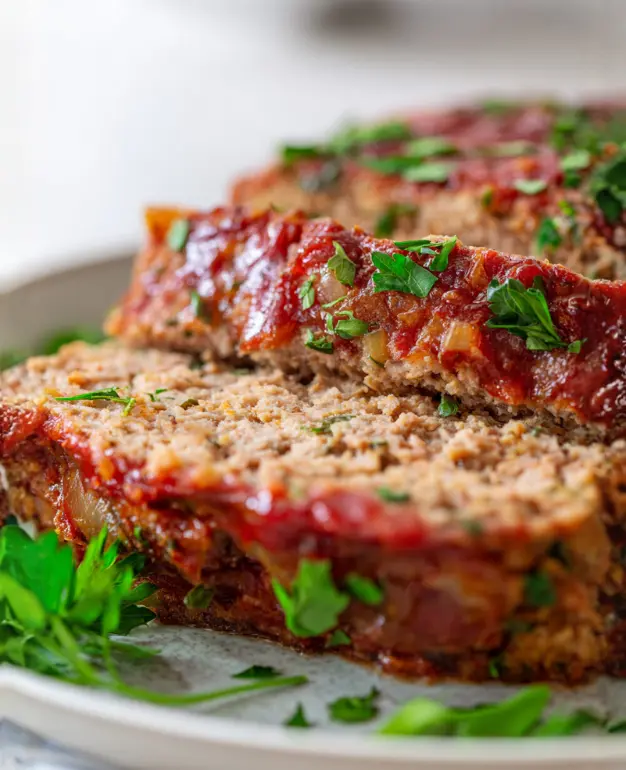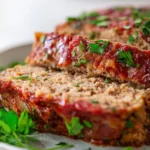Savory vegetable muffins present a delightful and healthful option compared to conventional sweet muffins. Packed with fresh vegetables and herbs, these muffins make for a versatile snack or breakfast option that’s both satisfying and healthy. Whether you’re looking to sneak more veggies into your diet or need a quick grab-and-go meal, these muffins are a perfect choice. In this article, we’ll explore everything you need to know about savory veggie muffins, from the ingredients that make them moist and flavorful to tips for storing and reheating them. Let’s dive in!
What Are Savory Veggie Muffins?
Understanding the Basics of Savory Muffins
Savory vegetable muffins present an innovative variation of the traditional muffin, which is generally recognized for its sweet taste. Unlike their sugary counterparts, these muffins are filled with an assortment of vegetables, herbs, and sometimes cheese, creating a savory treat that’s both filling and delicious. They’re a popular choice for those who prefer less sugar in their diet or are looking for a quick, nutritious snack that can be enjoyed at any time of day.
While sweet muffins often focus on ingredients like berries, chocolate chips, or nuts, savory muffins celebrate the flavors of vegetables like zucchini, carrots, spinach, and even bell peppers. These ingredients not only add flavor but also provide a nutritional boost, making savory muffins a healthier option compared to their sugary counterparts.
Common Ingredients Used in Savory Veggie Muffins
The appeal of savory vegetable muffins is found in their adaptability. You can incorporate a wide range of vegetables depending on your taste preferences or what you have on hand. Some popular choices include:
Zucchini: Adds moisture and a subtle flavor.
Carrots: Provide sweetness and a hearty texture.
Spinach: A nutrient-dense green that blends well with other flavors.
Bell Peppers: Add a bit of crunch and vibrant color.
Onions and Garlic: Enhance the overall flavor with a savory depth.
In addition to vegetables, herbs and spices play a crucial role in enhancing the flavor of these muffins. Fresh herbs like basil, parsley, or chives can add brightness, while spices such as cumin or paprika can give the muffins a warm, earthy flavor.
The Secret to Moist Muffins: Tips and Tricks
Choosing the Right Ingredients
One of the keys to making moist, savory veggie muffins is selecting the right ingredients. Vegetables like zucchini and carrots are excellent choices because they contain high water content, which helps keep the muffins moist during baking. Grating these vegetables finely ensures that their moisture is evenly distributed throughout the batter, leading to a tender texture.
Another crucial ingredient is fat. Whether you choose to use oil, butter, or even yogurt, fat plays a significant role in creating a moist and soft crumb. For a healthier option, olive oil or avocado oil can be used, both of which add richness without being too heavy. Some recipes also call for the addition of eggs, which help bind the ingredients together and contribute to the muffins’ moisture.
Mixing Techniques for Perfect Texture
How you mix the muffin batter is just as important as the ingredients themselves. Overmixing can lead to tough, dry muffins, as it develops the gluten in the flour too much. The best approach is to mix the dry and wet ingredients separately first and then combine them gently until just incorporated. It’s okay if the batter is slightly lumpy—this means you haven’t overmixed.
Temperature and baking time are also critical. Baking your muffins at the right temperature, typically around 350°F (175°C), ensures that they cook evenly and retain their moisture. If your oven runs hot, consider lowering the temperature slightly or checking the muffins a few minutes before the recommended baking time to prevent them from drying out.
Why Veggie Muffins Are a Healthy Choice
Nutritional Benefits of Veggie Muffins
Savory veggie muffins aren’t just delicious—they’re also packed with nutrients that contribute to a balanced diet. The inclusion of vegetables like spinach, carrots, and zucchini means these muffins are rich in essential vitamins and minerals. For instance, spinach is loaded with iron and vitamins A and C, which support immune function and skin health. Carrots add a hefty dose of beta-carotene, which is crucial for eye health, while zucchini offers potassium and antioxidants.
Moreover, these muffins are often lower in sugar than traditional sweet muffins, making them a better option for those monitoring their sugar intake. By swapping out some traditional ingredients like white flour for whole wheat or almond flour, you can increase the fiber content, which aids in digestion and keeps you feeling fuller for longer.
Low-Calorie and Diet-Friendly Options
If you’re watching your calorie intake, savory veggie muffins can be easily adapted to suit your needs. Opt for low-calorie vegetables like bell peppers, spinach, or tomatoes to keep the calorie count down. Using egg whites instead of whole eggs, or reducing the amount of cheese, can also make the muffins lighter without sacrificing taste.
For those following specific diets, like gluten-free or low-carb, there are plenty of substitutions you can make. Almond flour or coconut flour can replace traditional flour, keeping the muffins low in carbs and suitable for a keto diet. For a dairy-free version, consider using plant-based milk and cheese alternatives. These adjustments allow you to enjoy the deliciousness of savory veggie muffins while adhering to your dietary preferences or restrictions.
How to Make the Best Savory Veggie Muffins: A Step-by-Step Recipe
Ingredients You’ll Need
To create a batch of mouthwatering savory veggie muffins, gather the following ingredients:
1 ½ cups all-purpose flour (or substitute with whole wheat or almond flour for a healthier option)
1 teaspoon baking powder
½ teaspoon baking soda
½ teaspoon salt
1 teaspoon garlic powder
1 teaspoon onion powder
2 large eggs (or 4 egg whites for a lower calorie option)
⅓ cup olive oil (or vegetable oil)
½ cup plain Greek yogurt (adds moisture and a slight tang)
1 cup of grated zucchini, with excess water squeezed out.
½ cup grated carrots
½ cup chopped spinach
½ cup of shredded cheddar cheese (optional, to enhance the richness).
¼ cup chopped fresh herbs (such as parsley, basil, or chives)
Step-by-Step Preparation
- Preheat your oven:
Set your oven to 350°F (175°C). Line a muffin tin with paper liners or lightly grease it with oil or butter.
- Mix dry ingredients:
In a large bowl, combine the flour, baking powder, baking soda, salt, garlic powder, and onion powder. Stir well to ensure the baking agents are evenly distributed.
- Prepare the wet ingredients:
In a different bowl, combine the eggs, olive oil, and Greek yogurt, and whisk the mixture until it achieves a smooth consistency. Stir in the grated zucchini, carrots, spinach, and any optional cheese or herbs you’re using.
- Combine wet and dry ingredients:
Mix wet and dry ingredients in a bowl. Carefully incorporate the mixture using a spatula until it is only just combined. Avoid overmixing to avoid thick muffins.
- Fill the muffin tin:
Fill each muffin tin cup three-quarters full with batter. This allows the muffins to rise properly without spilling over.
- Bake:
In the preheated oven, bake the muffins for 17-25 minutes or until a toothpick inserted into the middle comes out clean. If your oven runs hot, start checking for doneness around the 18-minute mark.
- Cool:
Allow the muffins cool in the tin for 5 minutes before putting them to a wire rack to finish cooling.
Common Mistakes to Avoid
Overmixing the batter:
Overmixing can lead to tough, dry muffins. Mix until the ingredients are just combined for a lighter texture.
Not squeezing excess water from vegetables:
Vegetables like zucchini hold a lot of moisture. If not properly squeezed, this excess water can make your muffins soggy. Use a clean kitchen towel to squeeze out as much water as possible.
Baking at the wrong temperature:
Too much heat may dry out muffins, while too little can make them thick and undercooked. Make sure your oven is correctly heated.
How to Store and Reheat Savory Muffins
Proper Storage Techniques
After you’ve baked your delicious savory veggie muffins, it’s essential to store them correctly to maintain their freshness and flavor. If you plan to eat them within a day or two, storing them at room temperature is perfectly fine. Simply place the cooled muffins in an airtight container or wrap them individually in plastic wrap to keep them from drying out.
For longer storage, these muffins can be kept in the refrigerator for up to a week. Again, use an airtight container to prevent them from absorbing any odors from other foods. If you prefer to have a batch ready for a quick snack over a more extended period, freezing is your best bet. Place the muffins in a single layer on a baking sheet to freeze them individually first. After freezing, move them to a freezer-safe bag or container. In a different bowl, combine the eggs, olive oil, and Greek yogurt, and whisk the mixture until it achieves a smooth consistency.
Best Ways to Reheat Muffins
When you’re ready to enjoy your muffins again, reheating them properly is key to preserving their texture and flavor. If you’ve stored them in the fridge, a quick 15-20 seconds in the microwave should warm them up nicely without making them too dry. For frozen muffins, it’s best to thaw them overnight in the fridge before reheating.
If you want to recreate that freshly-baked crispiness, consider reheating the muffins in the oven. Preheat your oven to 300°F (150°C) and bake the muffins for about 10 minutes. This method works particularly well for muffins that have been frozen, as it helps to restore their original texture.
Frequently Asked Questions About Savory Veggie Muffins
What Is the Secret to Moist Muffins?
The secret to moist muffins lies in the right combination of ingredients and proper mixing techniques. Using vegetables with high water content, like zucchini or carrots, helps keep the muffins moist. Additionally, incorporating fats such as olive oil or Greek yogurt ensures a tender crumb. It’s also crucial to avoid overmixing the batter, as this can lead to dense, dry muffins. Lastly, baking at the correct temperature—typically around 350°F (175°C)—prevents the muffins from drying out during the baking process.
Are Veggie Muffins Healthy?
Vegetable muffins represent a nutritious snack choice, particularly when contrasted with their sugary alternatives. They are packed with essential nutrients from the vegetables, such as vitamins, minerals, and fiber, which are vital for maintaining overall health. By using whole wheat or almond flour instead of refined white flour, you can further increase the nutritional value. Additionally, veggie muffins are often lower in sugar, making them a suitable choice for those monitoring their sugar intake.
How to Store Savory Muffins?
Storing savory muffins correctly is crucial to maintaining their freshness. To ensure short-term storage, place them in an airtight container and maintain them at room temperature for a duration of up to two days. If you plan to keep them longer, refrigerate the muffins in an airtight container for up to a week. For even longer storage, freeze the muffins individually before transferring them to a freezer-safe bag or container. Frozen muffins can last up to three months and should be thawed in the fridge before reheating.
How Many Calories Are in a Savory Muffin?
The calorie count of a savory muffin can vary depending on the ingredients used. On average, a medium-sized savory veggie muffin contains around 150 to 200 calories. This count can increase if the recipe includes higher-calorie ingredients like cheese or extra oil. However, by using lower-calorie vegetables and healthier fats, you can keep the calorie count in check, making them a nutritious and diet-friendly option.
Creative Variations and Add-ins for Savory Veggie Muffins
Adding Different Cheeses
One of the easiest ways to customize your savory veggie muffins is by experimenting with different types of cheese. While cheddar is a popular choice for its sharp flavor and meltability, other cheeses can offer unique tastes and textures. For a tangy twist, try incorporating feta cheese, which pairs wonderfully with spinach and sun-dried tomatoes. Parmesan cheese, with its nutty and salty flavor, can add a rich depth to your muffins. For those who enjoy a bit of heat, pepper jack cheese can bring a subtle kick that complements the sweetness of vegetables like bell peppers.
Experimenting with Herbs and Spices
Herbs and spices are the key to elevating the flavor of your savory veggie muffins. Fresh herbs like basil, parsley, and cilantro add a burst of freshness that can brighten up the muffins. For a Mediterranean-inspired flavor, try adding oregano, thyme, or rosemary. If you’re looking to add some warmth and complexity, spices like cumin, smoked paprika, or curry powder can transform your muffins into a completely different dish. Don’t be afraid to mix and match herbs and spices to create your own signature muffin recipe.
For a more international flavor profile, consider adding ingredients like olives, sun-dried tomatoes, or roasted red peppers. These add-ins can give your muffins a bold, savory taste that pairs well with various herbs and cheeses. If you’re aiming for an extra nutritional boost, consider tossing in some seeds like flaxseed or chia seeds, which not only add a slight crunch but also contribute valuable omega-3 fatty acids and fiber.
Conclusion
Savory veggie muffins are not just a tasty treat—they’re a versatile and nutritious option for any time of day. Whether you’re looking for a quick breakfast, a portable snack, or a light meal, these muffins offer a satisfying solution that can be easily customized to suit your tastes and dietary needs. By experimenting with different vegetables, cheeses, herbs, and spices, you can create endless variations of this simple yet delicious recipe.
In this article, we’ve explored the ins and outs of making the perfect savory veggie muffins, from selecting the right ingredients and mastering the mixing techniques to storing and reheating your creations. We’ve also discussed the health benefits of these muffins and answered some common questions, such as how to keep them moist and how many calories they typically contain.

Savory Vegetable Muffins
Ingredients
Dry Ingredients
- 1.5 cups all-purpose flour Can substitute with whole wheat or almond flour for a healthier option.
- 1 teaspoon baking powder
- 0.5 teaspoon baking soda
- 0.5 teaspoon salt
- 1 teaspoon garlic powder
- 1 teaspoon onion powder
Wet Ingredients
- 2 large eggs Can substitute with 4 egg whites for a lower calorie option.
- 0.33 cups olive oil Can substitute with vegetable oil.
- 0.5 cups plain Greek yogurt Adds moisture and a slight tang.
Vegetables and Add-ins
- 1 cup grated zucchini Ensure excess water is squeezed out.
- 0.5 cups grated carrots
- 0.5 cups chopped spinach
- 0.25 cups chopped fresh herbs (parsley, basil, or chives) For added flavor.
- 0.5 cups shredded cheddar cheese Optional for enhanced richness.
Instructions
Preparation
- Preheat your oven to 350°F (175°C). Line a muffin tin with paper liners or lightly grease it with oil or butter.
- In a large bowl, mix the dry ingredients: all-purpose flour, baking powder, baking soda, salt, garlic powder, and onion powder.
- In a separate bowl, whisk together the eggs, olive oil, and Greek yogurt until smooth. Stir in the grated zucchini, carrots, spinach, and any optional cheese or herbs.
- Gently combine the wet and dry ingredients until just mixed. Avoid overmixing, as this can lead to tough muffins.
- Fill each muffin cup three-quarters full with batter.
Baking
- Bake in the preheated oven for 17-25 minutes, or until a toothpick inserted into the middle comes out clean. Start checking for doneness around 18 minutes.
- Allow the muffins to cool in the tin for 5 minutes before transferring them to a wire rack to finish cooling.











